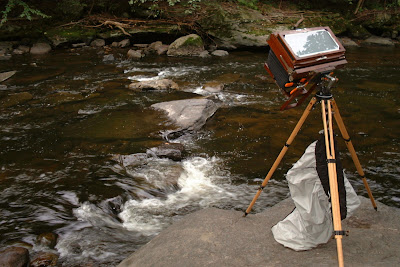Little River Canyon, Alabama
Down at the floor of the canyon, after a precipitous hike from the rim (see Jan. 12 post for view from above). The late afternoon light caught the delicate early spring foliage and gave a sparkle to the river surface. A tight shot across the river with a 14" Commercial Ektar on the 8x10 Deardorff showed the sense of the canyon floor better than a broader view. On the way back out I began to wonder if I'd gotten really out of shape over the winter, working my way up the precipitous path. Then I noticed a fisherman who had headed up the trail a few minutes before me. He was a good twenty years younger, and carrying only fly fishing tackle. I was gaining on him. So I didn't feel quite so bad.

















































